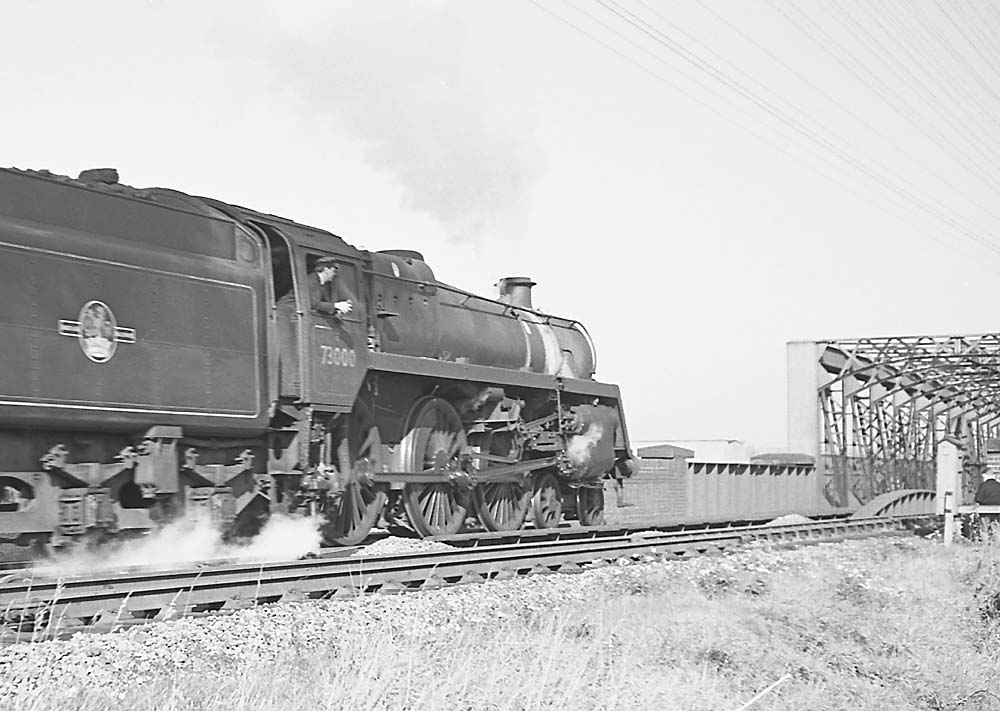|
|
 |
 |
|
LNER Route: Leicester to Marylebone
Rugby Central Station: gcrcs218
 |
British Railways Class 5 4-6-0 No 73000 heads across the
GCR's Birdcage bridge on 12th October 1963. Built by Derby works in April 1951,
No 73000 was the founding member of British Railway's 5MT class and lasted in
service until April 1968 when it was withdrawn from 9H Patricroft shed. The
Standard Class 5MT was one of the twelve standard classes of steam locomotive
built by British Railways in the 1950s. It was essentially a development of the
LMS Stanier Class 5 4-6-0 Black Five and a total of 172 were built for
British Railways between 1951 and 1957. Sir William Stanier's Black Five
had been the most successful mixed-traffic type in Great Britain. Construction
of the Black Fives had started in 1934 and continued past nationalisation to
1951. A new set of 'standard' locomotives was to be built by British Railways,
mostly based on LMS designs but incorporating design features from the other
big three companies plus modern ideas from abroad. In particular, the Standard
design incorporated features designed to make disposal easier: a self-cleaning
smokebox and a rocking grate removed the necessity for crews to undertake dirty
and strenuous duties at the end of a long shift.
The design work was done at the ex-LNER Doncaster Works but
the bulk of the construction was done at Derby Works. The locomotive featured a
Type 3B boiler almost identical to that of the Black Fives. The most obvious
visible changes were a higher running plate, slightly enlarged driving wheels
(from 6 foot 0 inches to 6 foot 2 inches and a standard cab. The first of the
class, 73000, was outshopped from Derby in April 1951 and 30 were in service by
January 1952. There was then a gap in construction before Derby resumed
building its remaining 100 engines with 42 being built at Doncaster, starting
in August 1955 and ending in May 1957, with Derby's last engine being built the
following a month later. Thirty engines, numbers 73125 to 73154, were built
with Caprotti valve gear and poppet valves. One of these engines, No 73129,
survives today at Butterley meaning it and No 71000 Duke of Gloucester
are the only engines with Caprotti gear left in Britain.
 back back

|
|
|
